As the holiday season approaches, you’re likely preparing for what should be the most profitable time of the year for your e-commerce brand. But with new e-commerce stores popping up on our feeds every day, differentiating yourself in a market full of holiday offers isn’t an easy feat.
Additionally, customer behavior shifts during the holidays, making it even harder to predict what will make your audience get their cards out. Without proper preparation, even your best ideas might not hit the mark.
In this guide, we’ll explore practical ways to tackle these challenges head-on. From creative marketing strategies that fit your budget to effective planning and execution.
Understanding Holiday Marketing
Holiday marketing is about capitalizing on the biggest shopping events of the year—Black Friday, Cyber Monday, and the lead-up to Christmas.
For your e-commerce brand, this season presents the perfect opportunity to increase sales, brand visibility, and build long-term customer loyalty.
According to the National Retail Federation, U.S. holiday sales hit a record $964.4 billion in 2023, with a significant portion of this growth coming from online shopping.
Another key trend? Shoppers are starting earlier than ever, with many beginning their holiday shopping by the end of October. If you wait until Black Friday, you could miss out on a large portion of potential customers.
Launching your campaigns early not only helps you stay ahead of the competition but also ensures you capture those early shoppers. Delaying could mean missing out on key sales, so getting a head start is essential to maximizing your success this holiday season.
Identifying Key Challenges
Navigating the holiday season can be a rollercoaster for e-commerce brands. Here are six common challenges you might encounter:
1. Content Saturation
With so many brands fighting for attention, standing out in a crowded marketplace can feel overwhelming.
For instance, you may have created a calendar and put out your best content, but it could still get lost among generic posts.
You'll need to find unique ways to grab your audience's interest and showcase what makes your offerings special.
2. Budget Constraints
If you’re on a tight marketing budget, executing impactful campaigns can be challenging. Let’s say, you have great ideas but lack the funds for ads or influencer partnerships, limiting your reach.
Get creative in allocating resources, perhaps by focusing on organic social media strategies or engaging existing customers to help spread the word.
3. Increased Consumer Expectations
Shoppers today demand more than just good deals; they expect a great experience. For example, they expect fast shipping and easy returns.
If you don’t meet these expectations, customers may choose competitors who offer a smoother shopping experience. You'll need to improve your operations to deliver the quality service they anticipate.
4. Tight Timelines
The holiday rush can leave you with little time to strategize and execute your marketing campaigns. If you haven’t planned in advance, you’ll find yourself scrambling to meet deadlines. This can lead to rushed campaigns that miss the mark, so start early and stay organized.
5. Technology Challenges
The holiday surge can put your website to the test. High traffic might slow down load times or even cause crashes.
If customers face technical issues when trying to shop, you risk losing sales and frustrating potential buyers.
For instance, J.Crew’s website crashed on Black Friday in 2018, and experts estimate it could have cost the company $775,000 in sales.
Effective Holiday Marketing Strategies
Before we talk about detailed steps and execution strategy, to help you get started instantly we've created this holiday promotion checklist to use! So download this and start preparing for your holiday marketing today!
Download Your Holiday Promotion Checklist
Let’s get to business then! Here are 5 Effective Holiday Marketing Strategies for your e-commerce business this holiday season:
1. Start Campaigning Early
Timing is everything in holiday marketing. Launching your campaigns early lets you build anticipation around your brand and its products before the tug-of-war begins. Start promoting your holiday offers as soon as October starts to give your audience enough time to plan their purchases.
And make it easier for them by adding an option to wishlist their products and save them before the sale begins. For example, Lululemon, a premium athletic apparel retailer, allows its customers to add items to their wishlist, helping them save products for later purchase.
Early campaigns can include sneak peeks of upcoming sales, highlighting exclusive products, or even sharing holiday-themed content that resonates with your target audience.
For example, sending out email newsletters that showcase your upcoming holiday deals or sharing festive social media posts can keep your brand top-of-mind
Bonus Tip: Make your life easier with a Social media post scheduler to streamline all your holiday campaigns at once.
2. Create Themed Content
Themed content is a powerful trend that can drive your sales. Your audience is likely seeking timely content around events like Halloween, Thanksgiving, Cyber Monday, and Christmas. Leverage these occasions to create engaging content that showcases your brand and products.
For instance, Ninja Kitchen posted a mouthwatering Thanksgiving recipe on their TikTok, which attracted substantial attention and engagement from their followers.
Bonus Tip: Check out our blog on Halloween video ideas and Thanksgiving social media post ideas to get some inspiration.
3. Focus on Customer Experience
In a crowded marketplace, delivering an exceptional customer experience can set your business apart. During the holiday season, consumers seek convenience, efficiency, and a personal touch. In fact, 49 percent of customers who left a brand to which they’d been loyal in the past 12 months say it’s due to poor customer experience.
Ensure that your website is user-friendly and optimized for mobile devices, as more shoppers are turning to their phones for purchases. In 2023, mobile e-commerce sales reached $2.2 trillion, making up 60 percent of all e-commerce sales globally.
4. Offer Special Promotions and Discounts
Everyone loves a good deal, especially during the holiday shopping frenzy. Plan a series of promotions that cater to your customers' desire for discounts. This could include flash sales, buy-one-get-one offers, or free shipping incentives. Make sure your promotions are communicated clearly across all marketing channels.
For instance, Barnes & Noble currently has a “Buy One, Get One 50% Off Halloween” promotion, encouraging customers to stock up on festive reads.
Digital coupons are a great way to increase your online sales. By sharing discount codes through email or social media, you can encourage customers to make that purchase.
Another great idea is to bundle your products into gift sets. This approach adds extra value and makes it easier for your customers to find the perfect, unique gifts they'll love!
Bonus Tip: Make use of a custom Campaign URL Builder that will help you track which pages are performing well and which ones might need some improvement.
5. Leverage Influencer Marketing
Influencer marketing continues to gain traction, especially during the holidays. Collaborating with influencers can help amplify your reach and tap into their established audiences.
Choose influencers who align with your brand values and have followers that match your target demographic.
Host giveaways, create sponsored content, or have influencers share their favorite products from your collection. Their posts can generate buzz around your brand and drive traffic to your website. Influencer marketing is particularly effective for visually appealing products, as influencers can create engaging content that showcases your items in use.
For example, influencer Thamieda Shilpy collaborated with Steve Madden on the occasion of Black Friday, promoting an exclusive early-access sale.
Creative Holiday Advertising Ideas
As the holiday season approaches, your e-commerce brand needs to get creative, especially since your competitors are stepping up their game.
Interactive Campaigns
Interactive campaigns are where your audience becomes an integral part of the experience, allowing them to engage directly with your brand in fun and meaningful ways. These campaigns can take various forms, such as contests, quizzes, polls, and challenges that encourage participation. For instance, invite customers to share their favorite holiday recipes featuring your products or create an interactive game that offers prizes for participation.
Let’s take a look at what Macy's did as a prime example of an interactive campaign that captures the holiday spirit. Their "Letters to Santa" initiative invites people of all ages to write letters to Santa Claus, whether delivered in-store or online. For every letter received, Macy's donates one dollar to the Make-A-Wish Foundation, blending the joy of childhood nostalgia with a charitable cause.
User Generated Content
User-generated content (UGC) is an excellent way to leverage the creativity and enthusiasm of your audience during the holiday season. By encouraging customers to share their experiences, photos, and stories related to your products, you foster a sense of community and brand loyalty.
This can take various forms, such as social media contests, hashtags, or campaigns that invite users to submit their own content, creating a buzz around your brand. For example, you could ask customers to showcase their favorite holiday moments featuring your products or to participate in a themed photo challenge.
A prime example of a successful UGC campaign is Starbucks' "Red Cup Season." In 2016, Starbucks unveiled new seasonal designs for their cups, inviting customers to embrace this tradition. The #RedCupContest encouraged people to share pictures of themselves with their festive red cups for a chance to win prizes. This not only created excitement around the limited-time designs but also generated a wealth of free advertising, as these cups appeared in countless social media posts.
Personalized messaging
Personalized messaging is a powerful strategy for connecting with your audience on a deeper level during the holiday season. By tailoring your communications to individual preferences, purchase history, or browsing behavior, you create a more relevant and engaging experience for your customers.
This can include personalized email campaigns featuring gift recommendations based on your past purchases, special discounts for loyal customers, or even birthday messages that coincide with holiday promotions.
For instance, imagine your e-commerce store specializes in personalized gifts. As the holiday season approaches, you analyze your customers' past purchases and send tailored emails showcasing gift ideas that align with each recipient’s interests.
If a customer previously bought kitchen gadgets, they might receive a message highlighting unique cooking tools or festive recipes. Meanwhile, another customer who loves home decor could get suggestions for seasonal decorations.
Planning and Execution
Now that you are equipped with effective holiday marketing strategies and creative holiday advertising ideas, let's dive into the essential steps for planning and executing your campaigns.
Step 1: Set Clear Objectives
Start by defining what you want to achieve with your campaign. Whether it’s increasing sales, boosting brand awareness, or growing your social media following, having clear objectives will guide your entire strategy. Make sure your goals are SMART—Specific, Measurable, Achievable, Relevant, and Time-bound. For instance, you might aim to increase your sales by 20% during the holiday season.
Step 2: Know Your Audience
Understanding your audience is vital for crafting messages that truly resonate. Spend some time analyzing your customer data and segmenting your audience by demographics, interests, and behaviors. Consider creating a buyer persona to help you tailor your marketing efforts to their unique needs and preferences. This targeted approach will enhance your messaging and improve your overall campaign effectiveness.
Step 3: Choose Your Channels
Decide where you’ll promote your campaign. Will you focus on social media, email marketing, or perhaps paid advertising? Choose the channels that align best with your audience's habits. For example, if you know your customers are active on Instagram, plan visually engaging content for that platform.
Step 4: Create Engaging Content
Now it’s time to get creative! Develop engaging content that captures the holiday spirit and encourages interaction. Whether it's festive blog posts, eye-catching social media graphics, or engaging videos, ensure your content is not only visually appealing but also aligned with your campaign objectives.
Additionally, consider repurposing existing content to save time and maintain consistency. For instance, you can turn a popular blog post into a series of social media posts or create a video summary.
Step 5: Plan Your Budget
Establishing a budget for your campaign is crucial. Begin by defining clear objectives, such as increasing sales or brand awareness, to guide your allocation. Understand your target audience to focus investments on the platforms where they are most active, whether that be social media, email, or influencer collaborations.
Plan your budget carefully for high-quality content creation, including graphics, videos, and copywriting, and account for costs associated with promotional activities like discounts and giveaways.
Additionally, set aside funds for analytics tools to measure performance and allow for flexibility in your budget to adjust based on real-time results.
Step 6: Schedule and Launch
Once your content is ready, create a schedule for your campaign. Use content calendars to plan your posts and emails in advance, and consider using a social media scheduler to automate your posting. This will help you stay organized and consistent across all platforms.
You can use vidyo.ai’s social media post scheduler. It’s quick and easy, allowing for one-click scheduling to over six platforms, including TikTok, Instagram, YouTube Shorts, Facebook, LinkedIn, and Twitter.
Launch your campaign at the right time—timing can make a significant difference in your campaign's success.
Step 7: Monitor and Adjust
As your campaign unfolds, closely monitor its performance using analytics tools to track key metrics such as engagement, traffic, and conversions. If something isn’t going as planned, be ready to make adjustments to optimize your efforts. Stay updated about the latest events and trends, paying particular attention to Twitter, Instagram, and TikTok hashtags that could improve your campaign’s visibility and relevance.
Step 8: Measure Results and Reflect
After the holiday season wraps up, take time to evaluate the results of your campaign. Did you meet your objectives? Analyze the data to understand what worked and what didn’t, and gather insights to improve future campaigns.
If everything went well, celebrate your success and consider scaling successful tactics, documenting what worked, and engaging with your audience for feedback.
However, if your campaign fell short, conduct a thorough analysis to pinpoint weaknesses, gather customer feedback, and assess whether your targeting, messaging, and timing were effective. Use these insights to refine your strategies and implement changes for future campaigns.
Case Studies and Success Stories
The Body Shop
For Christmas 2021, The Body Shop took a unique approach to its holiday marketing by launching a vibrant campaign across various platforms, including YouTube, TV, podcasts, and collaborations with content creators. Their mission was to revive festive spirit and promote the message “Spread the Love. Share the Joy.”
This campaign skillfully combined live-action footage with animation, showcasing The Body Shop products in heartwarming acts of kindness. It was crafted to direct shoppers to The Body Shop's Joy Hub, a central place for holiday shopping inspiration.
Engaging their audience further, The Body Shop introduced a competition where participants could nominate someone who brought them joy, fostering a sense of community and connection during the holiday season.
To amplify its reach, The Body Shop utilized a comprehensive social media funnel strategy across Facebook and Instagram, enlisting popular influencers and brand ambassadors to help spread the word and drive traffic to their offerings.
What they did right:
- Implemented a multichannel marketing strategy on Facebook and Instagram
- Maintained an upbeat and joyful tone throughout the campaign
- Created a unified storyline that resonated with audiences
- Partnered with influential figures to extend their reach
- Offered seasonal and limited-edition products that attracted attention
Nespresso
In 2021, Nespresso truly shined during the holiday season by creating unforgettable product bundles that delighted coffee lovers. They offered festive assortments, including a collection of 50 capsules and a popular advent calendar, both showcased with high-quality campaign images that captured the holiday spirit.
To support these enticing offers, Nespresso implemented a multichannel strategy that combined in-store promotions with social media marketing. Targeted Facebook and Instagram ads complemented promotional activities in physical stores, effectively spreading the word about their limited-time offers and ensuring maximum visibility and engagement. This integrated approach helped create a memorable holiday experience for customers while boosting sales during the festive season.
What they did right:
- Curated festive-themed products that resonate with customers
- Offered limited-time bundles and promotions to create urgency
- Implemented a comprehensive multichannel marketing strategy to reach a wider audience
PrettyLittleThing (PLT)
PrettyLittleThing (PLT) never fails to impress with its exciting product launches and generous discounts, especially during the holiday season. Their campaign features a staggering 25% off sitewide, an additional 10% off for email subscribers, and $1 flash sales on Black Friday, creating a buzz that attracts shoppers.
The brand enhances its appeal through influencer collaborations that result in exclusive collections, fostering a strong connection with its target audience. PLT effectively shares Christmas-themed content across all social media platforms, particularly TikTok and Instagram, driving engagement through creative competitions that encourage followers to like and comment.
What they did right:
- Offered unbeatable discounts that draw in customers
- Created exclusive deals to foster a sense of community
- Utilized share-worthy visuals to boost brand appeal
- Combined various marketing channels—from email to referral marketing—to amplify their campaigns
Leverage This Holiday Marketing for E-commerce Brands
The holiday season presents a wonderful opportunity to connect with your audience and foster meaningful interactions that last beyond the festivities. To leave a lasting impression, start by thoughtfully planning your marketing strategy and brainstorming content ideas that will engage your audience. Create a comprehensive list of what you want to achieve and how you plan to do it. If you need assistance in figuring it all out, sign up or log in to vidyo.ai, and we’ll help you bring your creative visions to life.


.svg)





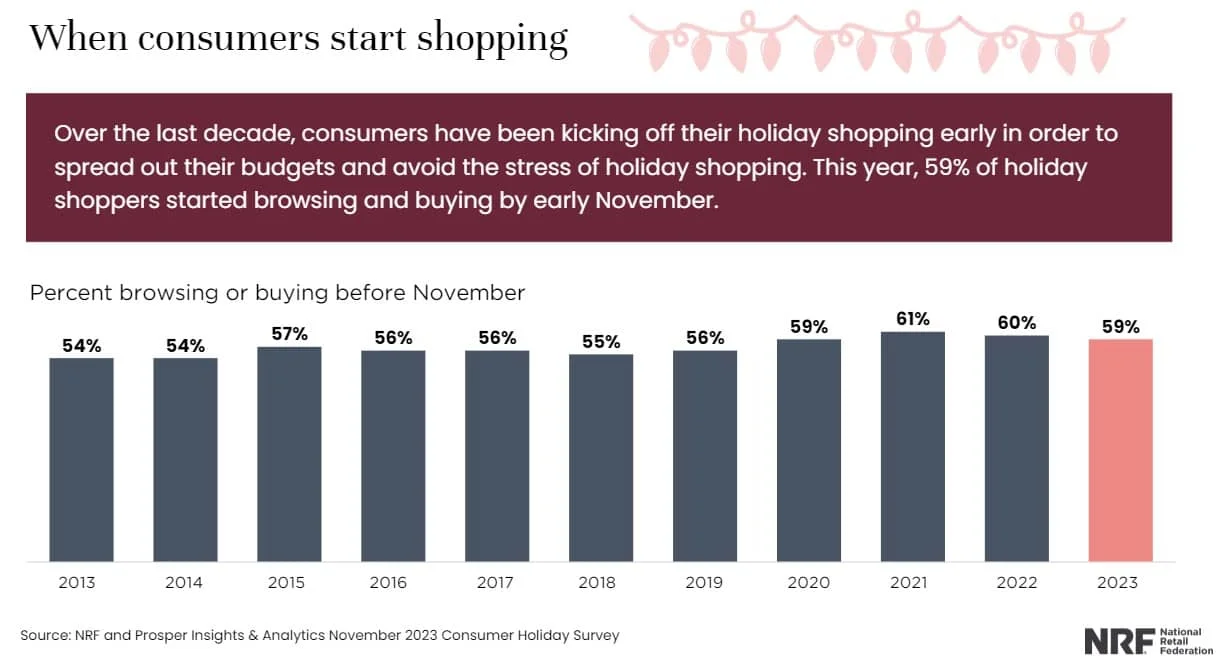
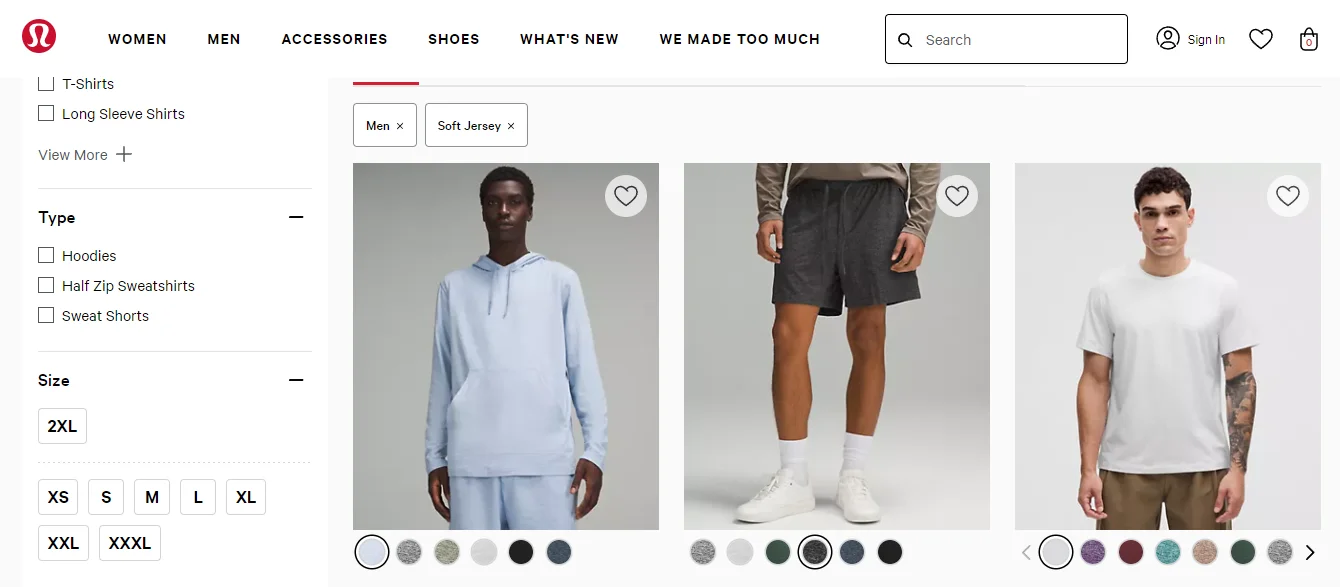
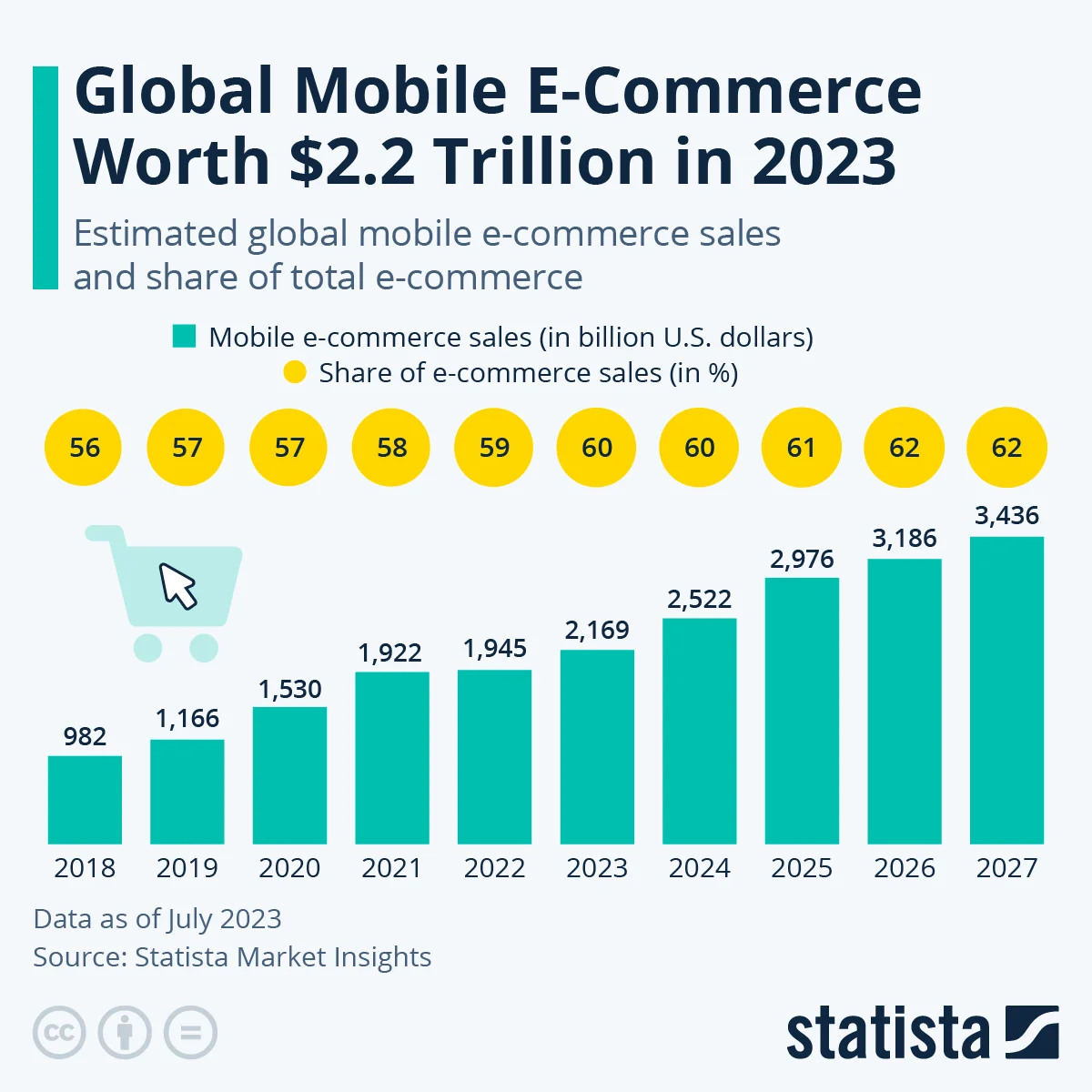
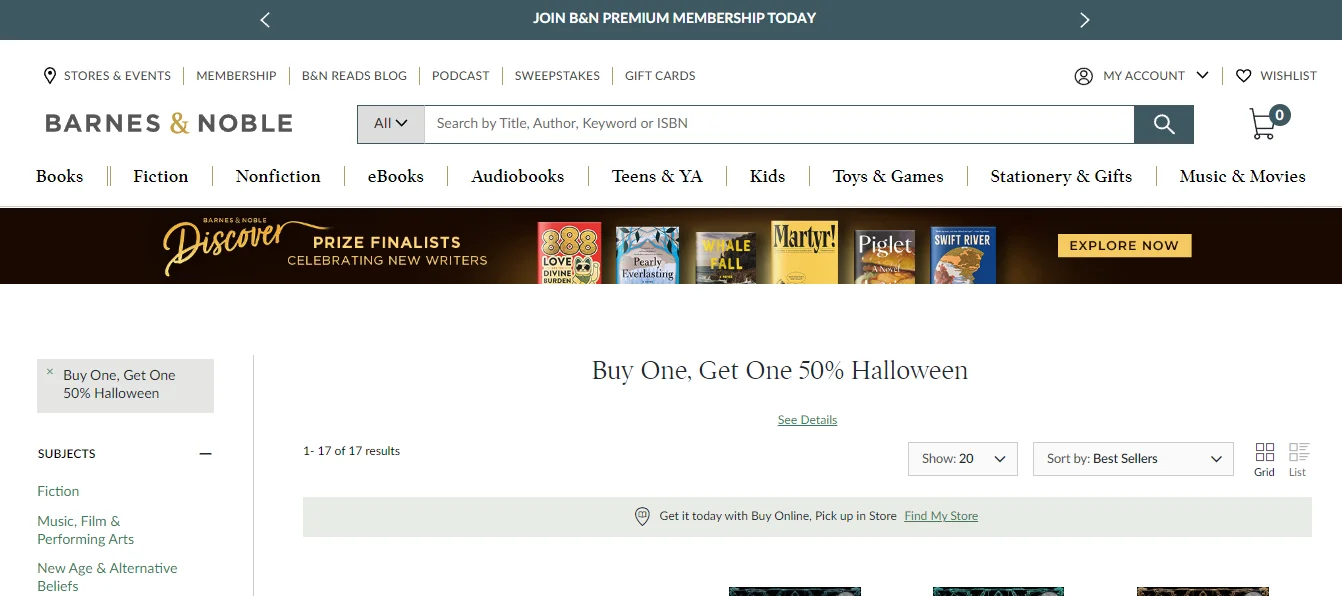
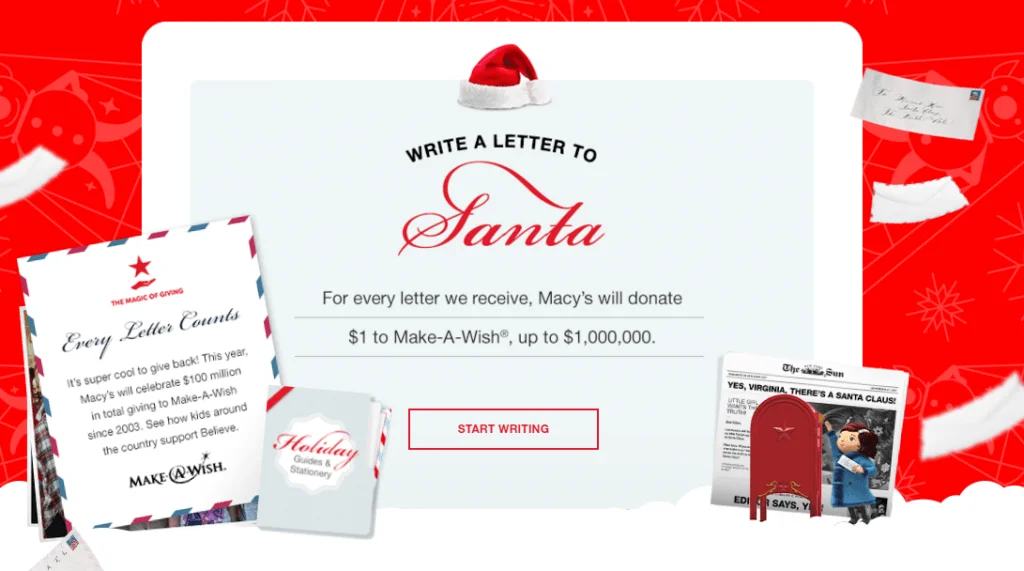
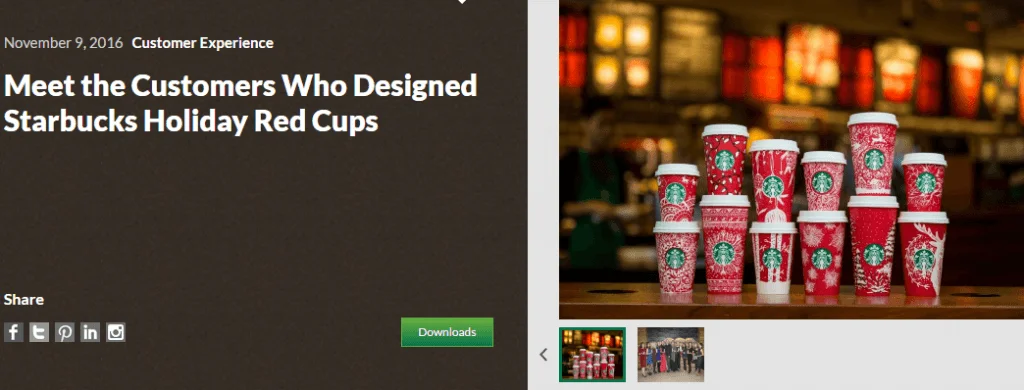
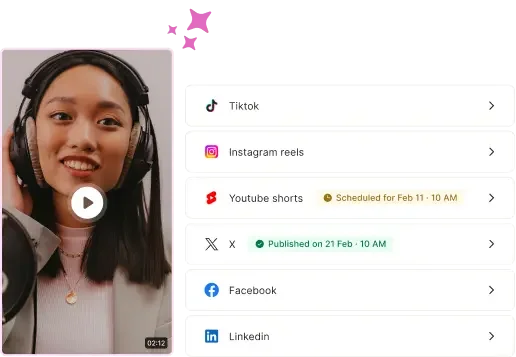

.png)
.png)
.png)